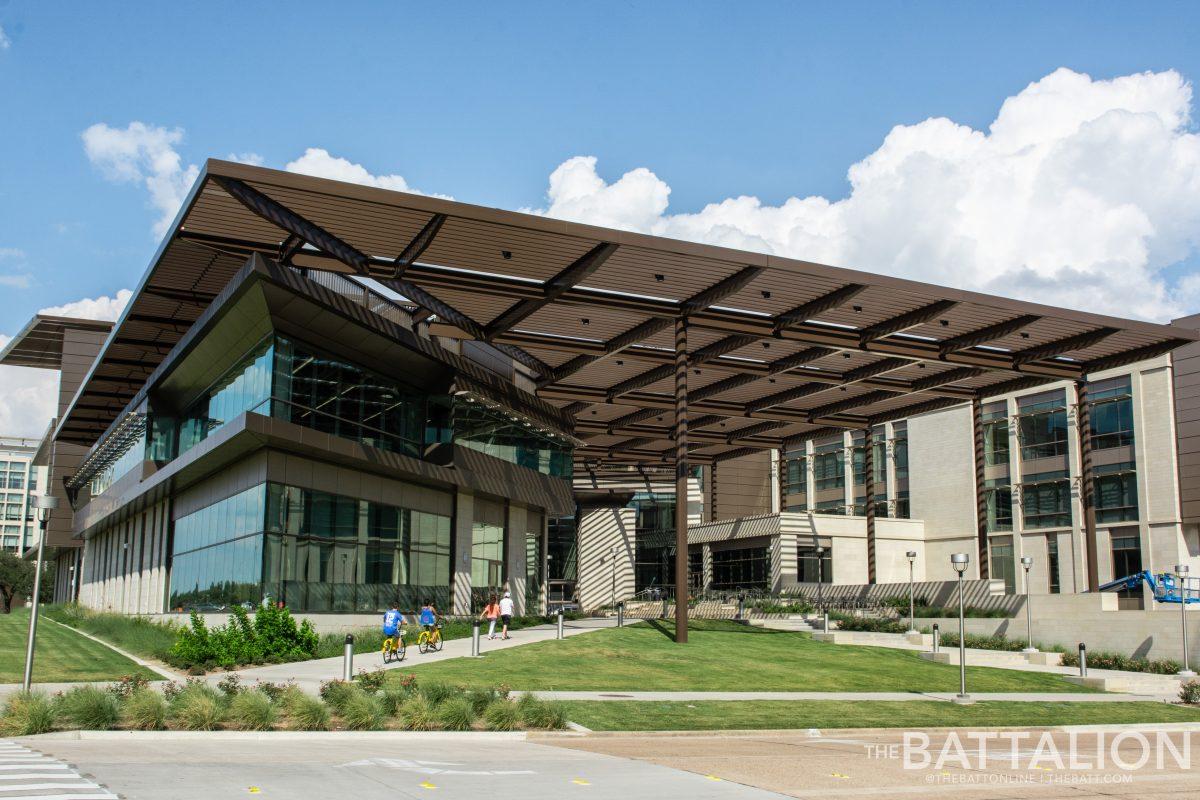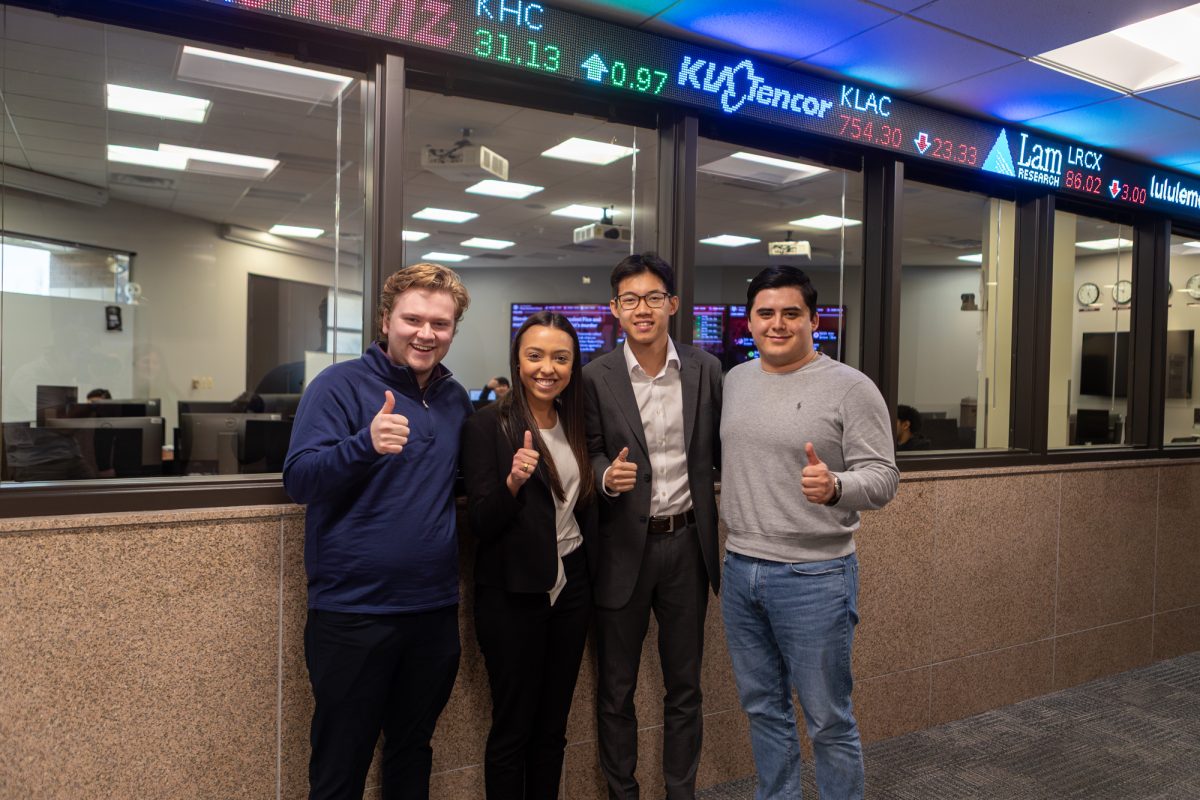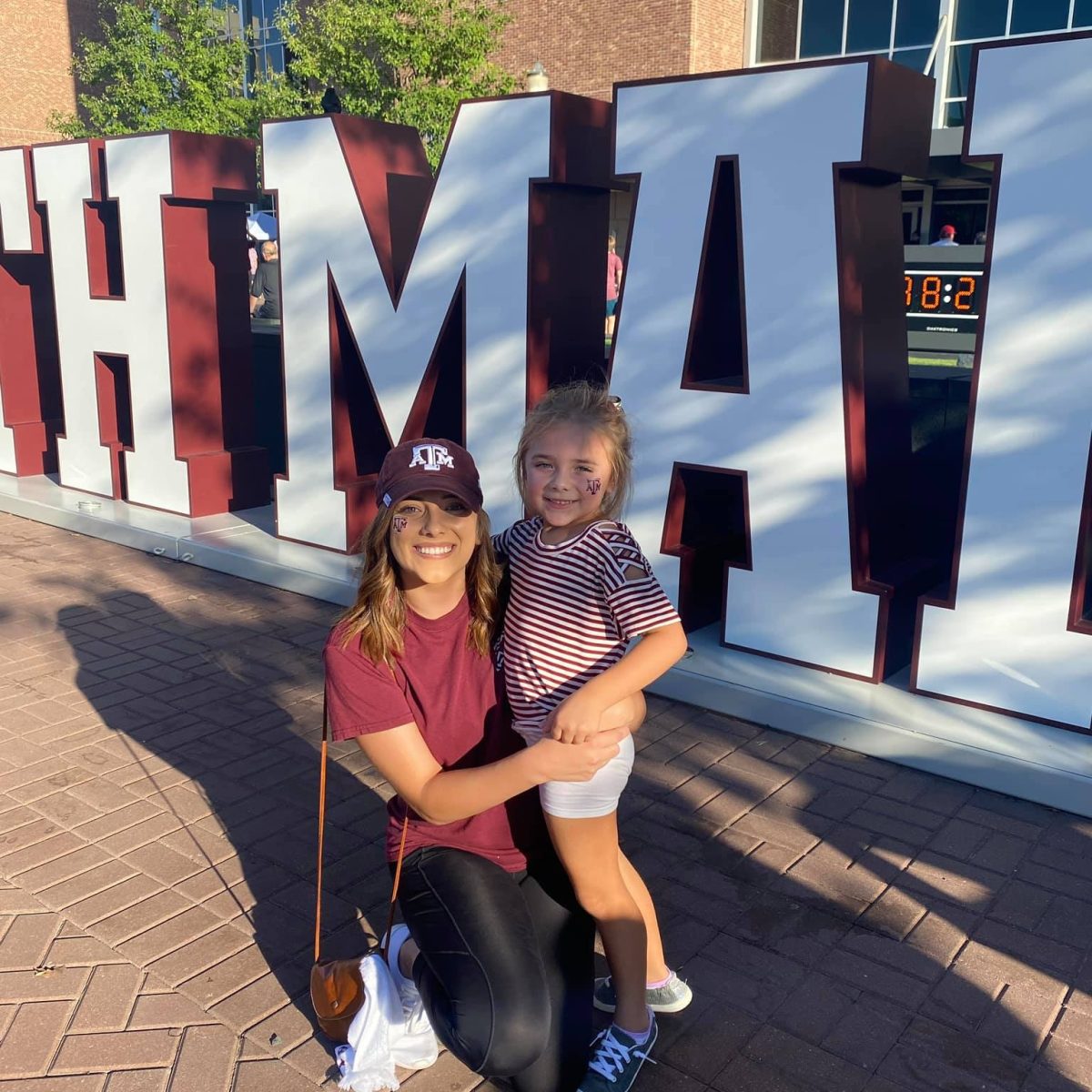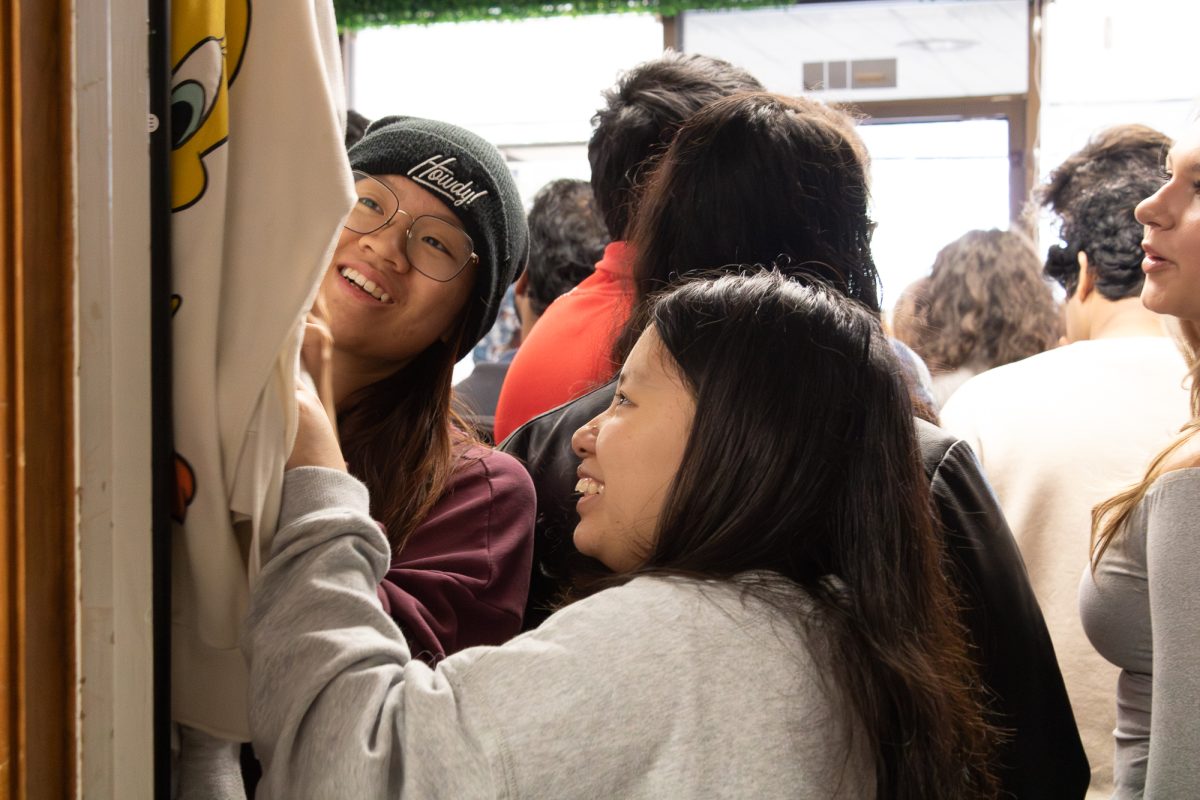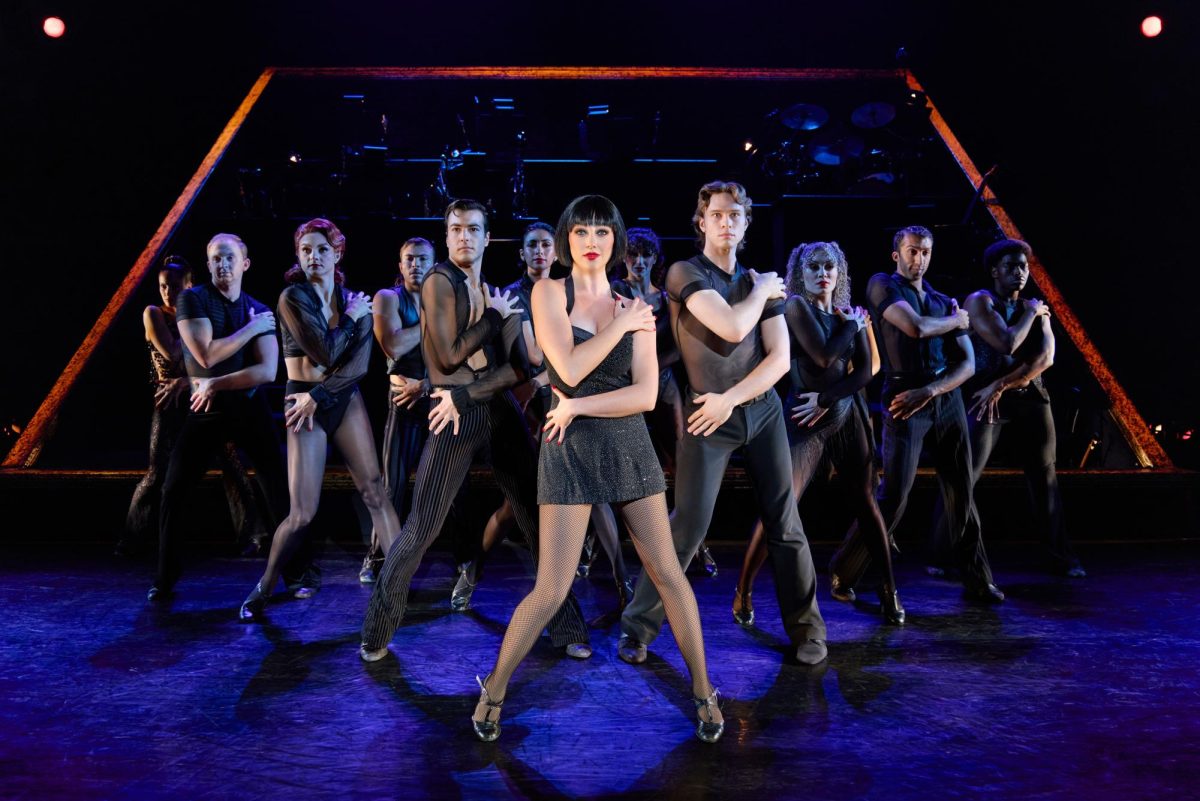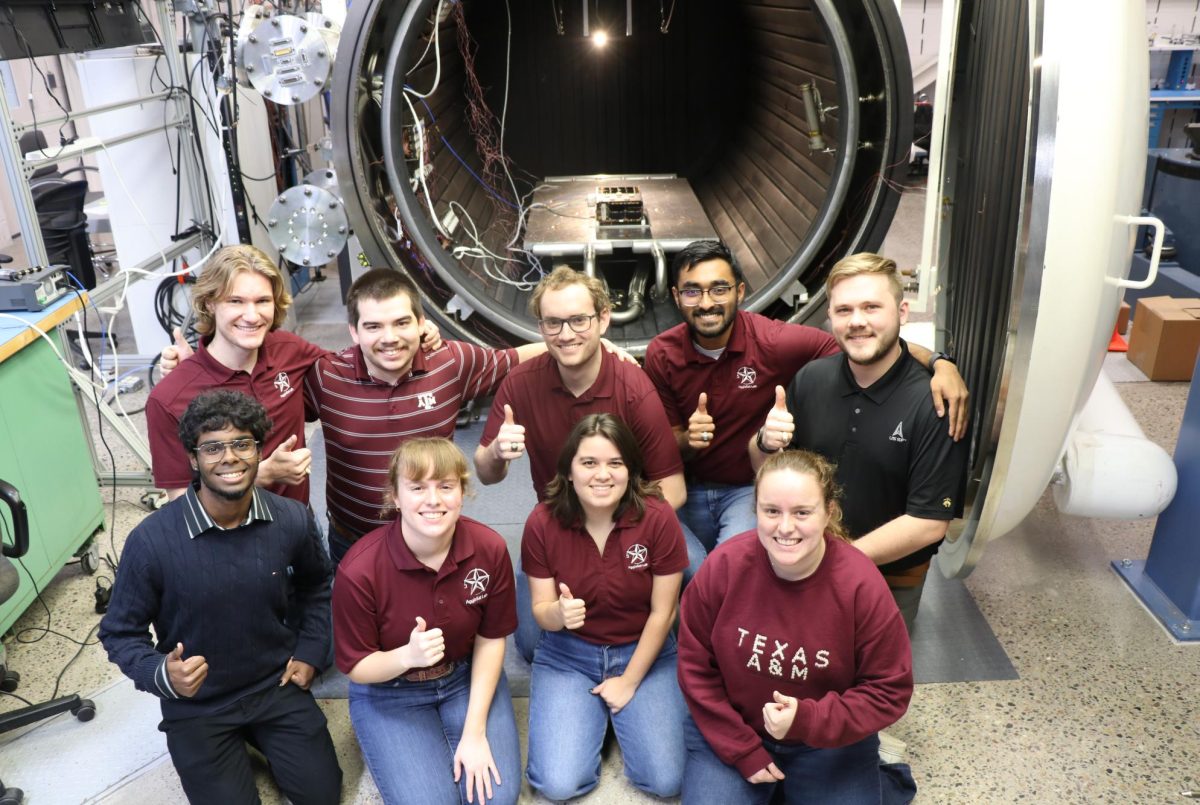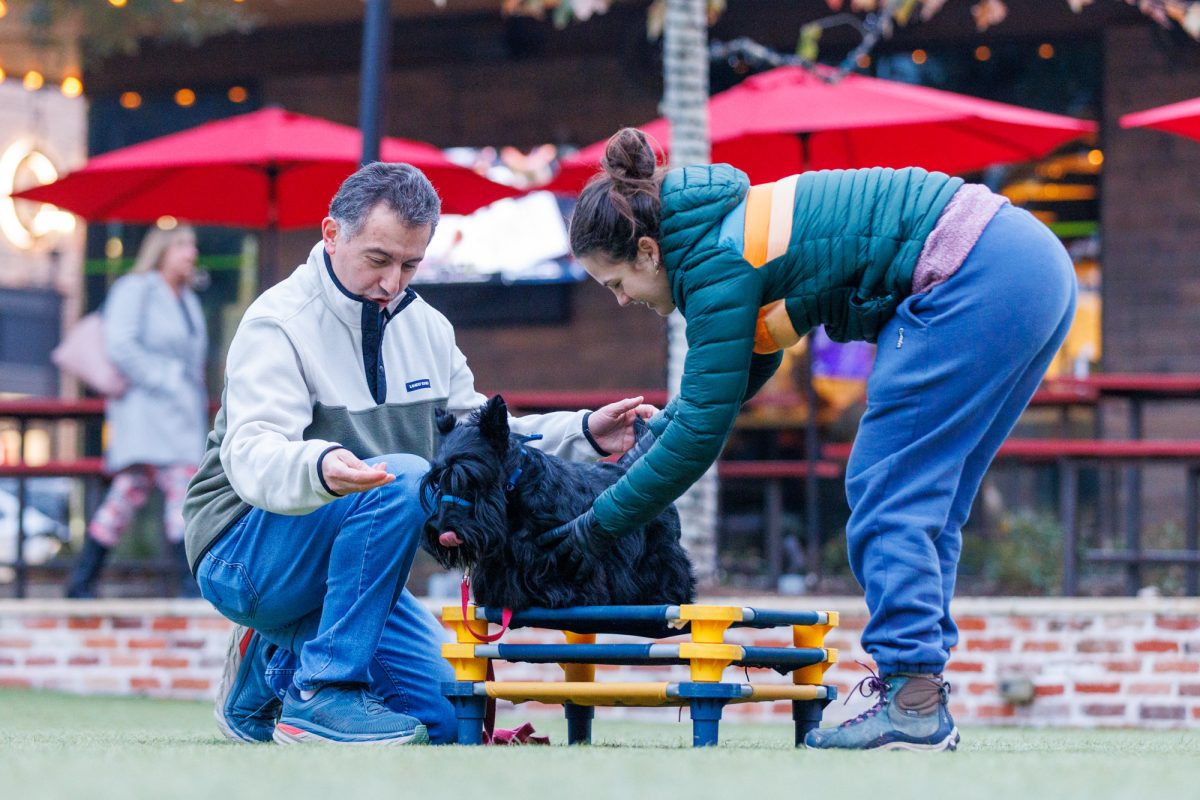On Saturday, Sept. 24, the “Viz Information” competition hosted by Aggies Invent was held at The Chevron Rooms of Zachry Engineering Education Complex, with undergraduate and graduate students hunched over rows of tables, focused and moving papers, numbers and ideas around to design innovative prototypes in 48 hours.
Aggies Invent is a 48-hour intensive design experience where 70 students are selected to work on projects that challenge their innovation and collaboration skills, according to their website. In this Aggie Invent competition, students were challenged by the National Security Agency, or NSA, to build a product that could use data to answer analytical questions about safety. Students were tasked to create prototyping tools and pitch the design to jumpstart a potential startup in 48 hours.
A recent graduate, Stephanie Amaya, Class of 2021, joined the entrepreneurial engineering program as a program coordinator, and hosts Aggies Invent several times a year.
“Aggies Invent allows students to think outside the box and allows [students] to have that extra set of skills that most students wouldn’t have just getting a regular degree,” Amaya said.“The program usually is 70 students, from freshmen to Ph.D. students, and they form teams around, they go ahead and research the need statement and come up with a prototype and pitch that to judges.”
According to Amaya, Aggies Invent has different themes throughout the year.
“This is NSA theme — they have tons of mentors here helping the students if they need advice or direction for their presentation in general,” Amaya said. “Aggies Invent gives them the confidence to equip them with skills that maybe someone else wouldn’t have.”
General studies freshman Aubrey Flores was a teammate in Team 10’s eco-friendly charging station goal. Flores said her group’s name is “50 by 30,” which is a reference to President Biden’s federal mandate to increase the market share of electric vehicles.
“Our main focus is making charging stations accessible and placing them in strategic locations,” Flores said. “One of the biggest challenges people would face is using the actual charging handle.”
Flores says by creating a better charging handle, those with physical disabilities or impairments that affect their fine motor skills make charging stations more accessible and easier to use.
“The idea is that we can create a plastic add-on cover that goes on top of the handle, allowing somebody with those physical limitations to use the handle still effectively,” Flores said.
Flores was drawn to this particular topic from personal experience.
“I’ve had experience with [the Americans with Disabilities Act] compliance, assistive technology training and all sorts of things relating to disability advocacy, within and outside Texas A&M,” Flores said.
Flores believes with products like these, she can help construct more accessible technology for her fellow Aggies.
“For me, it is important to have a project that will impact people like myself who have physical limitations, especially in transportation, and provide a solution that helps others and helps consumers and agencies,” Flores said.
A sports fanatic, aerospace engineering sophomore Akshay Kumar participated in Team 1’s “Moneyball” baseball scenario, which utilized statistical data to predict the future.
“I’m not a big baseball guy, but I love sports in general,” Kumar said. “I like the idea that you can predict future sports performance from past performances, which is pretty interesting to me.”
Kumar said there is a lot of baseball data floating around the internet and his team is trying to condense it into understandable figures and graphs that people can use.
“The whole event is focused on information visualization,” Kumar said. “The point of our project is to use a model to give any stats for any team based on a team that’s most likely to win based on past winners of the World Series because obviously, they did something right to win.”
Team 10’s, also named “Team Jacket,” premise was to identify relevant cyber threats through a product. Engineering freshman and Team 10 member Elise Nguyen believes in the importance of keeping others’ information safe and secure.
“Cybersecurity is a huge issue nowadays since a lot of information is on the internet now,” Ngyuen said. “A lot of the population also keeps their data together, all aggregated in one place, which makes that information very exploitable, so finding a solution to combat cyber threats is very useful.”
According to Nguyen, her team wanted to develop a system that could ingest cyber threats and intelligence feeds and display the most relevant information in an inclusive, accessible manner.
“We’re developing a plug-in outlet device that can read the signals and what is going over Wi-Fi networks,” Ngyuen said. “We can detect any changes in the pattern of life or changes in behavior from these IoT devices. It’s an actual hardware device, so you can plug in so you can plug it in, and then it will detect malware.”
Regarding cybersecurity, Aggies Invent “Information Viz” programs said cyber threat intelligence is “vast, complex, unstructured” — a true technological labyrinth of a tangle of information and misinformation.
Nguyen and her teammates created a prototype to help clear up the cybersecurity labyrinth in a creative, innovative way. The Team 10 members impressed the NSA judges the most and they emerged from the cybersecurity maze with a first-place win of $1,000 for each teammate.
With the Aggies Invent competition, Flores says she was motivated to provide a solution that helps others, consumers and agencies alike.
“[By] providing a solution that could potentially be used in the real world — I’m making an impact for myself and my peers,” Flores said.




